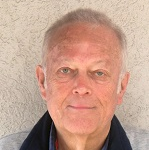State-of-the-Art Sensors Technology in Austria
A special issue of Sensors (ISSN 1424-8220). This special issue belongs to the section "State-of-the-Art Sensors Technologies".
Deadline for manuscript submissions: closed (30 September 2010) | Viewed by 58593
Special Issue Editor
Interests: physicochemical basis of sensors; chemical sensors; physical sensors; metrology; supramolecular chemistry; molecular recognition; molecular imprinting; anisotropic phases
Special Issues, Collections and Topics in MDPI journals
Special Issue Information
Dear Colleagues,
The aim of this special issue is to provide a comprehensive view on the state-of-the-art sensors technology in Austria. Research articles are solicited which will provide a consolidated state-of-the-art in this area. The Special Issue will publish those full research, review and high rated manuscripts addressing the above topic.
Prof. Dr. Franz Dickert
Guest Editor
Keywords
- biosensors
- chemical sensors
- physical sensors
- remote sensing sensors






